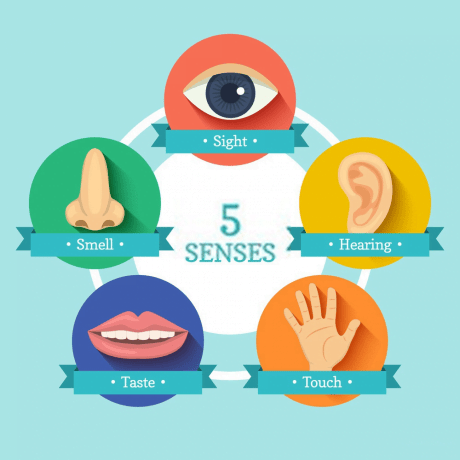Introduction
In this post we will not just focus on understanding what is leadership and how it is related to Hypnosis and NLP, but also how to become a powerful leader with the help of specific techniques and processes from Hyposis and NLP.
What is leadership?
Simply defined, leadership is the art of motivating a group of people to act towards achieving a common goal. This involves being able to inspire others and being prepared to do so.
Effective leadership is based upon ideas, whether original or borrowed, that the leader wants the group to act upon. But this won’t Happen unless those ideas can be COMMUNICATED to others in a way that engages them enough to act as the LEADER wants them to act.
The leader is the inspiration and the director of the action. They should possess the necessary skills to inspire others to follow their lead.
Leadership is like a Magnetic Force, drawing people and resources into Action.
Are leaders born or made?
While there are people who seem to be naturally endowed with better leadership abilities than others, people can learn to become leaders by improving specific skills.
History is full of people, who despite having no leadership experience, were able to step up in a crisis and persuaded others to follow a suggested course of action. They possessed traits and qualities that helped them to step into roles of leadership.
Can Hypnosis and NLP help someone become a powerful leader?
What are NLP Presuppositions and How can they help a leader?
Presuppositions, in general, are beliefs underlying a system.
The NLP presuppositions refer to beliefs, or assumptions, that have guided the development of NLP. You can think of them as the basic principles that guide you when utilizing NLP.
When you think of it, each of these presuppositions when applied with self and others can help you become a powerful leader.
Let us look at some of these presuppositions and how a leader can benefit from them:
- Everyone is doing their best with the resources they have available at that particular moment.
As a leader you can help people recognize the hidden resources and skills they have. Once they recognize these resources, you can help them use the same to achieve desired outcome. - Behind every behaviour lies a positive intention.
For example, instead of condemning someone, you ask: ‘What does this person intend to achieve with this behaviour? What value(s) does this person thereby want to fulfil? Understanding the positive intention behind their behaviour can help you motivate them to take the desired action. Working with intentions is something that a NLP practitioner does a lot. - There is no failure, only feedback.
A leader can use this presupposition to help people change their perspective about failure. Once people learn to handle failures, the leader’s ability to help them take initiatives towards new ideas is enhanced considerably. - The meaning of communication is the response that you get.
The application of this presupposition enables the leader to help people take responsibility for the communication as they realise that if their communication has not achieved what they intended; they need to change something about their communication. The presupposition also helps the leader become a more effective communicator as he/she begins to take responsibility for his/her communication. - People can communicate on the conscious level as well as the unconscious level.
This presupposition is extremely important from a leadership point of view. As a leader one needs people to not just agree with ideas consciously but also act upon those ideas naturally without much resistance. The most effective way to do so is by learning to communicate directly at the level of unconscious. - Map is not equal to territory.
There is a difference between objective reality (territory) and subjective reality (map). Our experiences are defined by the map and not by the actual territory.
A leader can take this idea further by helping people change their model of the world to fit the model that inspires them to take desired actions. This presupposition also helps the leader understand the importance of respecting the model (map / representation) of the world of other people. This is probably the best and the most efficient method of building trust and developing rapport. - There are no incapable people, only incapable states (states of mind / moods).
The presupposition helps the leader understand the importance of mental states of people. Once the leader learns to manage and change people’s mental state, he or she can help these people perform to the best of their abilities which in turn enables the leader to achieve the desired outcome in the fastest way possible.
Which are some of the NLP and Hypnosis processes that can help you become a Powerful Leader?
- Rapport building with Pacing and Leading
Rapport is the ability to relate to others in a way that aids understanding and trust. It is the process of responsiveness at the unconscious level. While Pacing helps to create rapport, Leading helps to bring changes in other people’s life.
Pacing, here, refers to you establishing or allowing the other person to show you or let you know what they’re currently feeling or where they are at present. In other words, it’s about reducing differences and increasing similarities between yourself and other people.
Leading refers to the second stage of the process in which the other person starts pacing you unconsciously. In a room full of people, when one person yawns, someone else picks up the yawn and before you know it, everyone is yawning. This is unintentional leading in action.
A leader can use pacing and leading to not just build rapport with others but to also influence the way people think, feel and act.
- Representational system for effective communication
 In NLP, the senses through which we experience the world are referred to as representational systems, for example, visual (for things you see), auditory (for things you hear), kinesthetic (things you feel or sensations), olfactory (things you smell), gustatory (things you taste) and, AD or self talk.
In NLP, the senses through which we experience the world are referred to as representational systems, for example, visual (for things you see), auditory (for things you hear), kinesthetic (things you feel or sensations), olfactory (things you smell), gustatory (things you taste) and, AD or self talk.NLP shows that we all have preferred representational systems that we process most information through. This preferred system can be determined through physiology and predicates used in a conversation.
Understanding the representational system enables the leader connect with people in a way in which they understand information more effectively. This not only helps with clearer communication but also with building trust and rapport.
- Use of metaphor and stories
Metaphors are used commonly in NLP in order to enable the practitioner to connect with the listener’s unconscious mind. It enables the speaker to connect with the source of the listener’s learning and behaviour, thus enabling them to change rapidly.
There are several types of metaphor used in NLP, such as deep, and embedded metaphors.
Metaphors can –
- help people grasp the object or idea, to which the metaphor is applied, more effectively
- induce rapport
- make speaking and writing more lively and interesting
- communicate a great deal of meaning with just a word or phrase
- create a mind shift since they imply rather than directly state relationships can get people to think about what they are hearing and take on new learning’s.
- Anchoring
Anchoring uses a stimulus (a sound, an image, a touch, smell or a taste) to trigger a consistent response.
We learn by making links and associations. In a similar manner, anchors can be created with repetition and association. Advertising uses anchoring frequently by associating products with feel good states.
You may have heard of Pavlovian conditioning. The NLP process of ‘Anchoring’ allows you to link desirable states, like confidence and motivation, to just about anything.
The most common use of anchoring is to access internal resources, feelings and states when you want them. Replacing unwanted feelings and thoughts with desirable ones is freedom indeed. Other uses are gaining control over emotions, accessing memories and creativity and influencing responses in other people.
- Understand human behavior with Theory of mind and NLP
What happens in our environment is received by our conscious mind. The conscious mind uses certain rules or beliefs from the critical filter to interpret this information and to decide how this information should get stored in the subconscious.
Based on the interpretation, emotions get attached to the event or information. Often, it’s the emotion that makes us feel uncomfortable or becomes a barrier to achieve a goal.
The above understanding enables us to change ourselves in ways that we want. Our lives become more satisfying and fulfilled. We are also better able to understand, relate to, and work with others. Enhanced communication and connection makes our interactions with others more satisfying and beneficial, both for self and others.
- Language pattern for Effective communication
 Language patterns, from the field of Conversational Hypnosis, allow you to understand how the other person processes information and how you can present your ideas such that other people will accept it and act upon it.
Language patterns, from the field of Conversational Hypnosis, allow you to understand how the other person processes information and how you can present your ideas such that other people will accept it and act upon it.A good leader needs to have the ability to influence not just an individual but also groups of people simultaneously. There isn’t anything nearly as powerful as conversational hypnosis when it comes to influencing people.
All above-mentioned tools and processes are part of a larger, comprehensive and complete field of coaching, known as Cognitive Hypnotic Coaching. To understand how you can learn more and apply it to your own life, CLICK HERE.


 In NLP, the senses through which we experience the world are referred to as representational systems, for example, visual (for things you see), auditory (for things you hear), kinesthetic (things you feel or sensations), olfactory (things you smell), gustatory (things you taste) and, AD or self talk.
In NLP, the senses through which we experience the world are referred to as representational systems, for example, visual (for things you see), auditory (for things you hear), kinesthetic (things you feel or sensations), olfactory (things you smell), gustatory (things you taste) and, AD or self talk. Language patterns, from the field of Conversational Hypnosis, allow you to understand how the other person processes information and how you can present your ideas such that other people will accept it and act upon it.
Language patterns, from the field of Conversational Hypnosis, allow you to understand how the other person processes information and how you can present your ideas such that other people will accept it and act upon it.